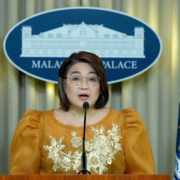Fighting corruption through digitalization
When the COVID-19 pandemic struck, all of the world needed to urgently buy protective gear, oxygen, and ventilators. The countries that moved fastest and made the best spending decisions had electronic procurement systems in place. These systems not only help in crisis, but are crucial for reducing corruption and saving governments billions of dollars.
How governments spend money is something most of us seldom consider. Yet this money adds up to a fortune. Governments are by far the largest buyers of works, goods, and services from the private sector. Public procurement amounted to $11 trillion in 2019. That’s around 12 percent of global gross domestic product. In the countries where the poorer half of the world’s population lives, procurement makes up an astounding half of all government expenditure.
Electronic procurement or “e-procurement” speeds up this important spending, and speed is crucial in crises like COVID-19. In South Korea, introducing e-procurement meant the duration of the processing of bids was cut from an average of 30 hours to just two hours, whereas in Argentina the duration of the public procurement process fell by more than 11 days.
But e-procurement does far more than just let governments move more quickly. It makes government spending less corrupt and more effective. This is crucial, because corruption is a trillion-dollar problem globally each year, with very few answers. The world is doing just as poorly now on corruption as it was a decade ago, according to Transparency International.
My think tank, the Copenhagen Consensus Center, has identified e-procurement as a crucial policy for the four-in-10 low-income governments that still haven’t implemented it. This research is part of our multiyear project working with dozens of the world’s leading economists to identify the global best policies to speed up achievement of the Sustainable Development Goals (SDGs). These goals run from 2016 to 2030, so this year we are at half-time—yet we are failing on nearly every single one of them. On the SDG target of eliminating corruption, we are making zero progress. Public procurement, because of its size, is one of the biggest corruption sources for every country, so introducing e-procurement can be an incredibly effective way to tackle corruption. Moreover, it can also end up making countries billions of dollars richer.
Our research shows that over the first 12 years of designing, building, and maintaining an e-procurement system, costs will average $16.7 million, irrespective of a country’s size—a relatively trivial sum compared to most government budgets. During the pandemic, e-procurement not only sped up the ability of governments to act; it also increased the number of bidders. India’s Karnataka State found the number of suppliers increased from 130 to 4,800 in the first three years of e-procurement, while South Korea saw the number of bidders double from 70,000 to 147,000 in the same period.
Having transparent, widely accessible systems also means governments can spend less advertising for bids. The Philippine government saved $9 million annually on newspaper advertisements. There is also evidence that digitizing procurement means better oversight and improved service delivery. In India, there was a 12-percent increase in road quality grade after it shifted to an e-procurement system.
The most obvious, immediate, and well-documented consequence is that e-procurement simply saves the government money. Our research shows an average 6.75 percent cost-cutting across all procurement. For each dollar spent, a low-income country will realize savings worth $38. This makes e-procurement an exceptionally effective policy.
And it is not just in times of a pandemic like COVID-19 that an e-procurement system can show its worth. Having an e-procurement system helped Ukraine’s government to continue to function when it was invaded by Russia. Transparency International reported in March 2022 that “the procurement system and all platforms continue to operate” every single day, even if the country was under attack.
As many countries face new threats in the future that may require large-scale spending in short periods, e-procurement can allow governments to do so more quickly and more efficiently—and with far less corruption. Introducing an e-procurement system is not only a proven way to cut waste and graft in public spending, but also to build resilience and be much better prepared for the challenges ahead. It’s a phenomenal policy that every country should pursue.
The Jakarta Post/Asia News Network
Bjorn Lomborg is president of the Copenhagen Consensus, a visiting fellow at Stanford University’s Hoover Institution, and the author, most recently, of “Best Things First.”
The Philippine Daily Inquirer is a member of the Asia News Network, an alliance of 22 media titles in the region.

















